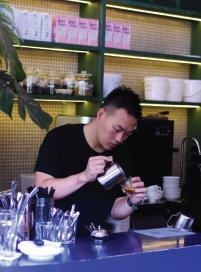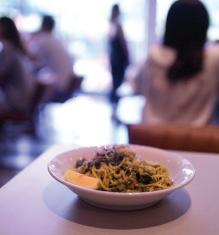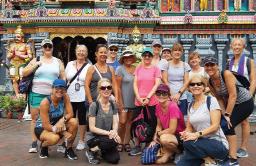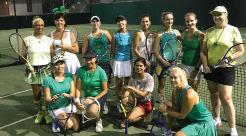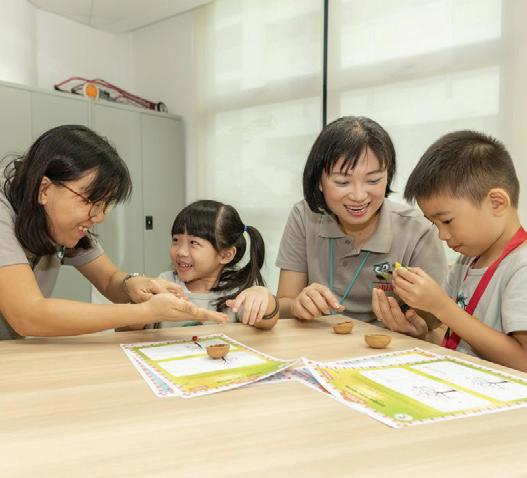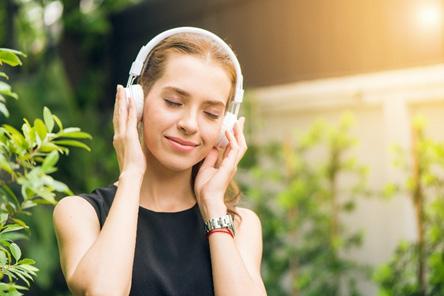
6 minute read
Exploring Singapore
Exploring Singapore observations of an expat in Singapore
Written by and Photography by Amanda Jaffe
Advertisement
Singapore’s Steamy Side
Much of what I write these days seems outdated or out of reach days later. Sadly, this installment of Exploring Singapore feels like one of those pieces. I strongly encourage you to visit Sembawang Hot Spring Park -- when it’s a good time to explore Singapore’s distant corners once again. Until then, enjoy the story and the pictures. Like hope, these waters spring eternal. Looking for a “spa” with a twist? Look no farther than Sembawang Hot Spring Park, mainland Singapore’s only natural hot spring and foot onsen. If you’re seeking anything remotely approaching glamour, look elsewhere. But if you’re seeking a uniquely Singaporean experience, this may be your spot. While Sembawang Hot Spring Park was opened to the public in January 2020, the hot spring was discovered in 1908 on what was then a pineapple plantation. The spring water was tested in London with good results, after which it was bottled and sold over the years under different brand names. It was the hot spring’s reputation for the curative properties of its waters, though, that became the key to its longevity. The spring and a nearby well became popular with local villagers, who sought the healing waters but also came by to boil eggs, wash clothes,
and de-feather poultry. Eventually, the nearby village became known as Kampong Ayer Panas (“Village of Hot Water”). During the Japanese occupation, the Japanese built thermal baths in the area for the use of officers. A bomb dropped during an allied air raid damaged the spring, temporarily slowing the water flow. After
the war, plans to turn the spring into a spa never came to fruition, but locals kept visiting. When Singapore’s Ministry of Defense (MOD) acquired the hot spring and surrounding land for the expansion of Sembawang Air Base, the public lobbied to keep the spring open. While development of the Air Base went forward, MOD allowed the public continued access to the spring during daytime hours. Over the years, the spring was reduced to a concrete slab with Wooden ladles (and buckets) available for use
a few pipes and the old well, but people continued to visit. Finally, in 2016, Singapore’s National Parks Board began developing the grounds into a park. Newly renovated Sembawang Hot Spring
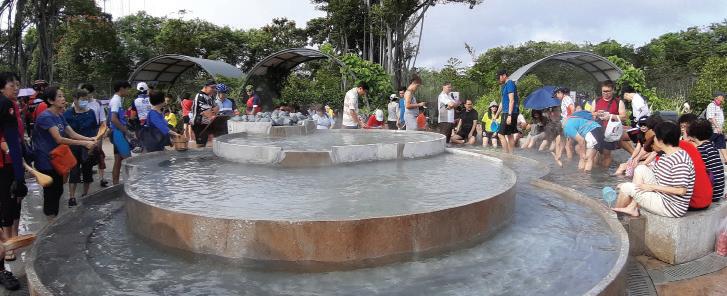
Today, Sembawang Hot Spring Park offers an upgraded visitor experience but remains delightfully low key. The Floral Walk leading to the hot spring is beautifully landscaped with information about
fruit trees and edible plants that used to be found in Singapore kampongs. Sunbirds flit from tree to bush as you make your way toward the spring. Just before the spring you’ll find Sembawang Eating House, which offers traditional fare such as kaya toast and nasi lemak. From there, it’s a short walk to the spring, just past an awe-inspiring banyan tree. The National Parks Board (NParks) has reconstructed the hot spring, creating a series of tiered pools that cool the water as it cascades down, from a scalding 70°C to a hot tub-quality 40°C, optimal for soaking. The spring is designed as a foot onsen, with seating around the bottom level. This affords wonderful opportunities to pass the time with locals, like the Singaporean dad I met who drops his kids off for lessons every Saturday morning and then heads over to the hot spring to soak his feet. (I’m pretty sure he doesn’t tell them where he’s going.) Around the spring you’ll find bamboo buckets available for use, if you prefer to join the many Singaporeans soaking their feet in the shade. Off to one side is the other highlight of this most unusual Singapore spot – the Main Water Collection Point. With typical Singaporean efficiency and forethought, NParks has designed the Main Water Collection Point to cater to visitors of all ages and abilities. There’s the general collection point where buckets of all sizes can be filled on the ground, a shielded water collection point designed for wheelchair users, and a
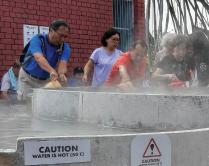
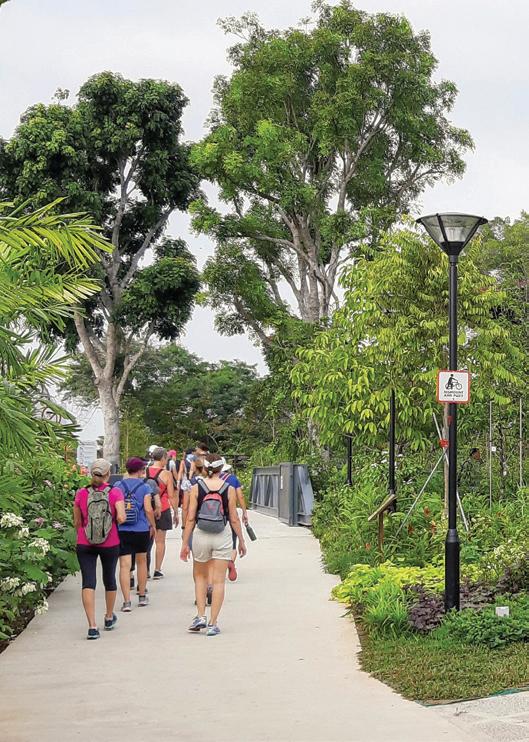
two-level collection point designed to allow children to fill smaller containers. Whether by design or default, the Main Water Collection Point doubles as the Egg Cooking Station, where you can make your Carefully scooping up steaming water
Egg cooking station closeup
own soft-boiled onsen eggs. It’s a hive of activity as people bring their eggs, pails for boiling, and all the accompaniments, including sweet soy sauce. Sembawang Hot Spring is a geothermal spring. While its source has never been definitively determined, it’s believed to be groundwater that has seeped through cracks in the Bukit Timah Granite, one of Singapore’s five major geological formations. (Rest assured, though. While the water is heated deep within the earth, Singapore does not sit on a volcano.) Getting to this park takes some commitment. From the Sembawang MRT, it’s an easy 25-30 minute walk to the entrance. After your visit, you can walk another 25 minutes to the Yishun MRT, a route that takes you through a lively HDB with numerous eating and everyday shopping options, including an extensive produce market. This truly is Singapore’s heartland.
In addition to exploring Singapore for Bamboo Telegraph, Amanda Jaffe writes about her travel adventures on her blog, Rambling Llama (www.ramblingllama.com).
Watering Holes The best places in singapore to find coffee & cocktails
Atlas Bar
600 North Bridge Rd, Parkview Square Singapore 188778
Written by Silvia Fernandez
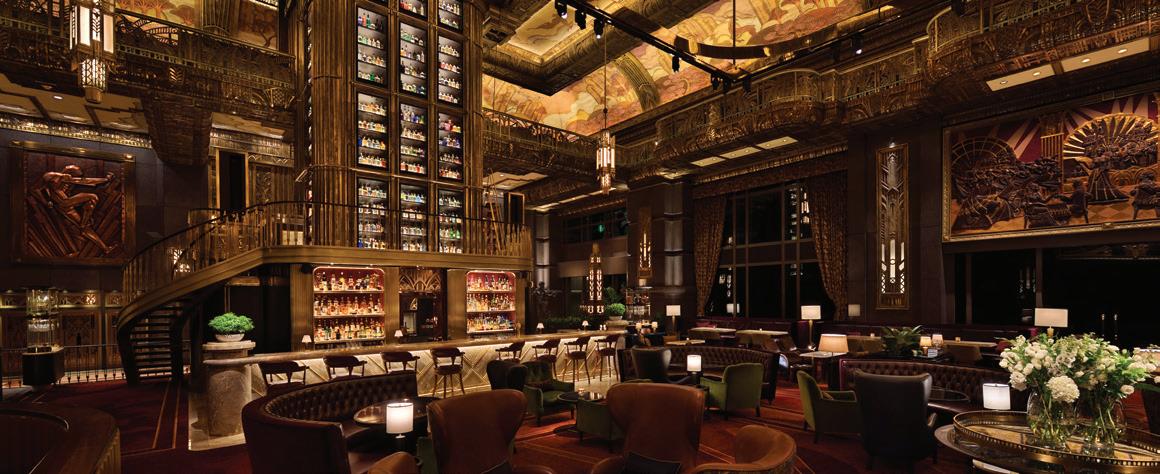
Mark my words: you will never get tired of this place! When bars and restaurants reopen, you’ll want to put Atlas Bar at the top of your must-visit list. It’s inside the Parkview Square, an iconic office building located near Bugis MRT. Take a minute to enjoy I.M Pei’s Gateway building and Ole Scheeren’s Duo Towers nearby. The Parkview Square was designed in the Art Deco style and has the nickname of the Gotham Building. I am never ready to absorb the full beauty of the lobby every time I go there: the 15-meter-high ceiling with hand crafted details is amazing! You may have heard about the “wine angels” of days gone by. They were female bartenders hoisted to the massive drinks cabinet by cables, to retrieve the requested bottle! That is now a thing of the past, but you can still imagine the “wine angels” floating around in this amazing space. I recommend making a reservation before going to avoid a long wait. Once you are seated, choose your cocktail and if in doubt, talk to the waiter/waitress because they are highly prepared to suggest the one right for you: they seem to know you or read your mind! The Gin selection is legendary, so a G&T is always an easy one to start with. You will be back here, I am sure. What about a lunch with friends during the week? It is five o’clock somewhere. Also please note the strict dress code of no shorts or sandals after 5pm. Atlas Bar; photo credited to EK Yap and ATLAS
Atlas Coffee House
6 Duke's Rd, Singapore 268886
Here’s another place you’ll want to patron after the circuit breaker is lifted. After enjoying a walk or family time in the Botanic Gardens, there is always the dreaded question: where do we go for a coffee and a pastry? There are many options and all are good. But if you feel like something different, head to this little, modern coffee house nearby. It has a nice corner location with an outdoor seating area, which is good if you are in a group or with kids. Every time I go there, it is after a walk through the lovely garden grounds, and I look forward to the freshly squeezed juices and good quality coffee. Try something new and give this place a chance.
